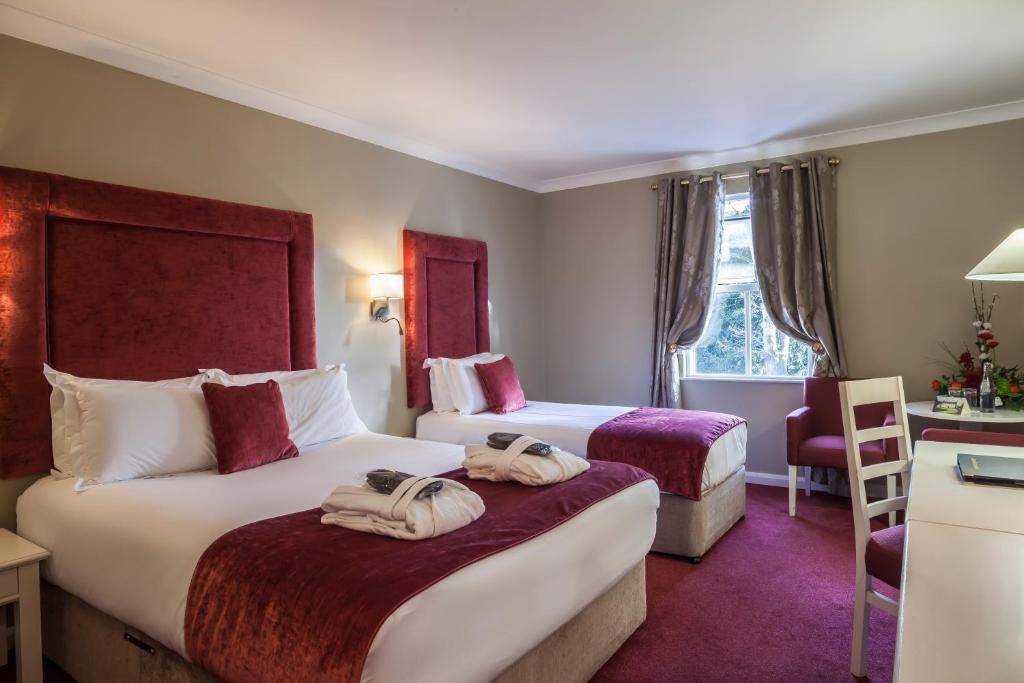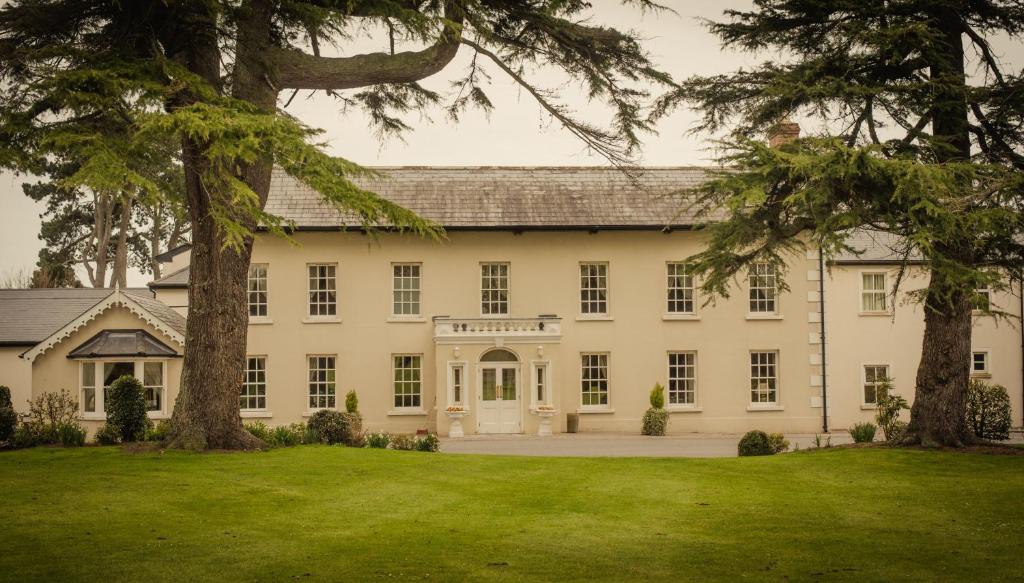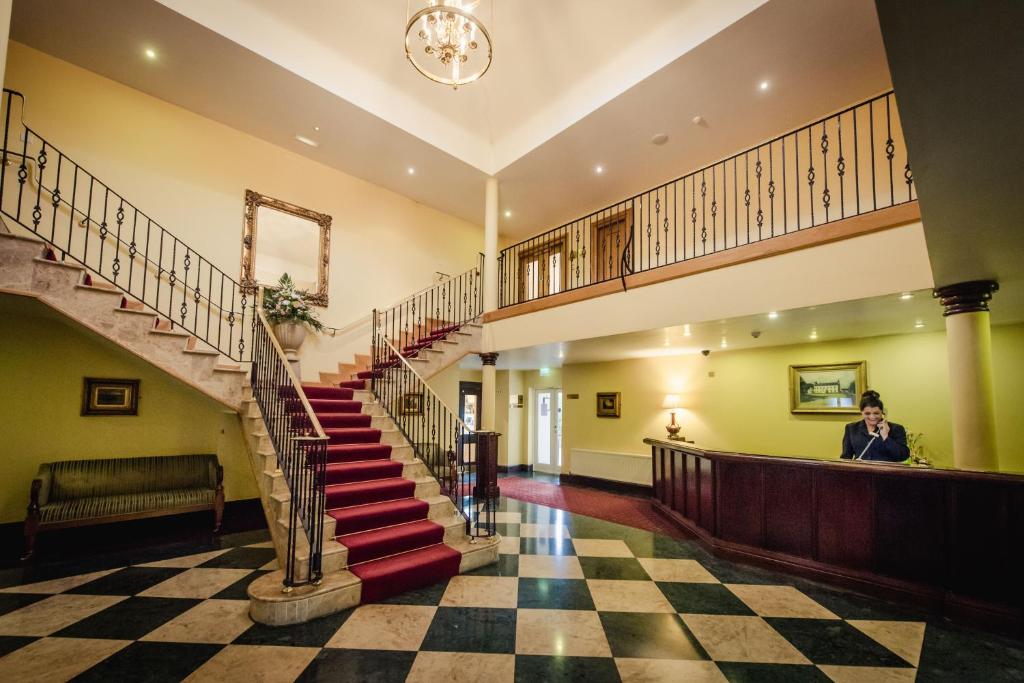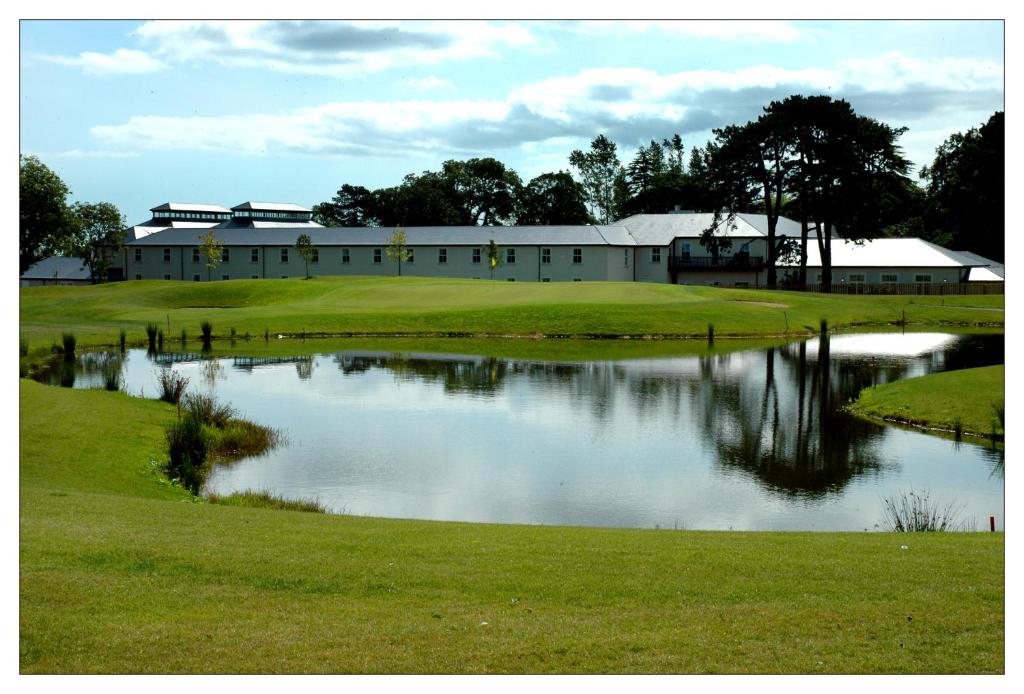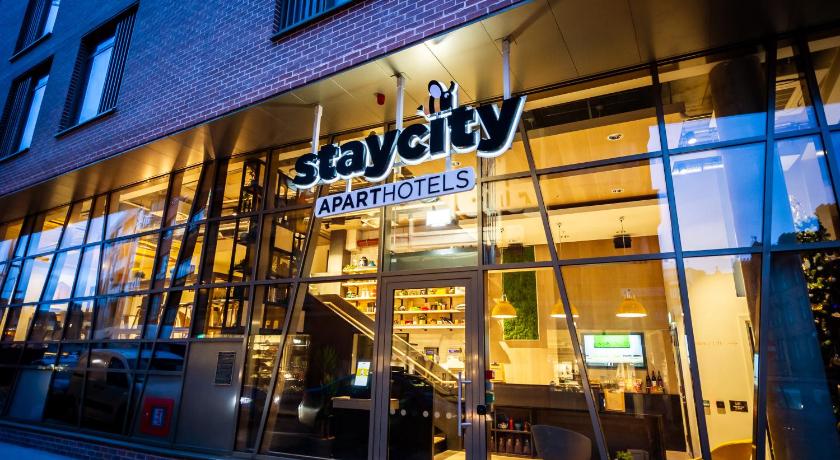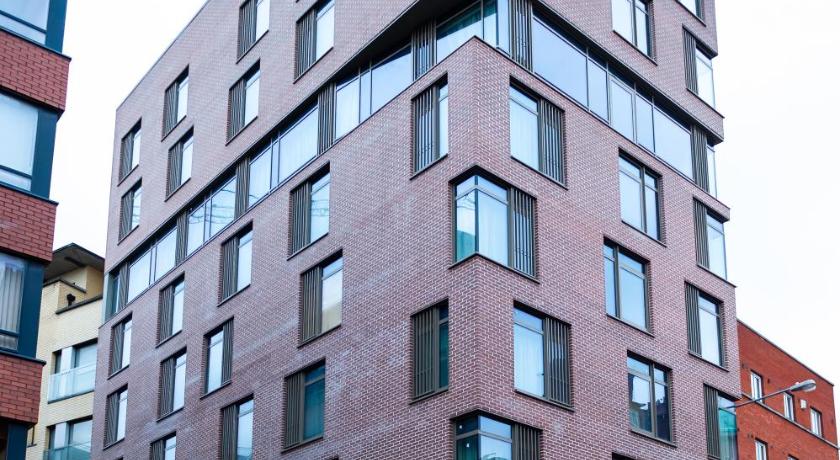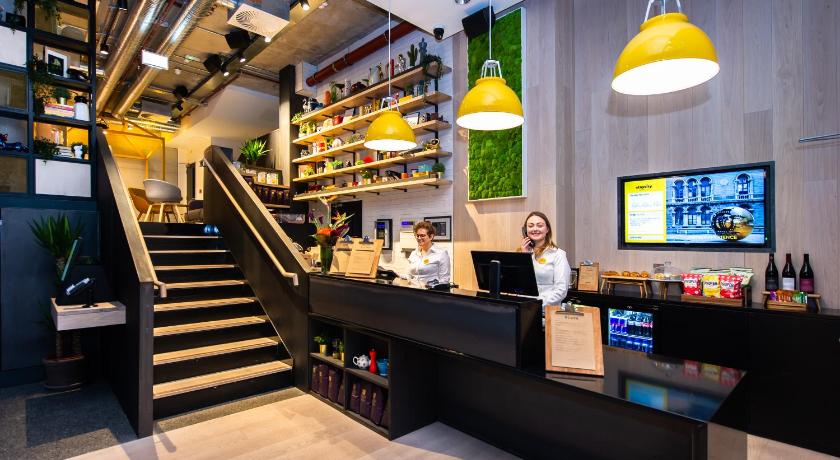Mentioned by The Telegraph
Dublin: free things to do


"Just on the other side of the Liffey from Phoenix Park, in Kilmainham, the Irish War Memorial Gardens are a beautiful quiet spot for a first look or your wedding portraits. Just like with St Stephen’s Green and Iveagh Gardens, you’ll need to get permission from the OPW. In return you’ll get one of the most beautiful backdrop of wisteria, roses or ivy – depending on what season you find yourself there!"

"If you have ever wanted to experience farm life, then Airfield Estate is the place to visit with your kids as it is a working farm that allows guests of all ages to learn about farming, food, and nature in a relaxed environment. Address: Overend Ave, Dundrum, Dublin 14, D14 EE77, Ireland"
"Dublin's only open farm, Airfield Estate offers a super day out for the whole family. See the wonderful farm animals, explore the extensive gardens, see the exhibition in the stunning historic house, and enjoy afternoon tea too!. Plan your visit to Airfield Estate now!"
"Airfield Estate dates back to 1894 and was left to the people of Dublin in 1974. Now, it’s a public space, with a working farm, award-winning restaurant, museum, gardens and even beehives. Daily events include egg collection from the hens, calf-feeding and milking."

"Some secrets are too good to remain hidden, which is why you’re about to find out about Iveagh Gardens, often known as Dublin’s secret garden. Laid out by the 1st Earl of Clonmell and once a fashionable public space called Coburg Gardens, it fell into disrepair before being rescued and revived by Sir Benjamin Guinness in 1862; the family then cared for the gardens before donating them to the Irish nation in 1939. You can now enjoy a rustic grotto and cascade, fountains, wilderness woodlands, a maze, a rosarium and archery grounds – there are few better things to do in Dublin if the weather is good."
"One of Dublin’s favorite secret gardens, this one is located a few blocks further south of St. Stephen’s Green. What began as an earl’s lawn now hosts a yew maze, rosarium, fountains, and the cascade, a stunning site for wedding photos. A Human Rights memorial bears witness at these gardens."
"As local Dublin experts, who know the city better than anyone, we’re only too happy to let you know the best spots in the city, and Iveagh Gardens is one of our favourites!. Hop off the city tour at St. Stephen’s Green, and it’s just a short stroll away!"

"Nestled away behind Dublin Castle and secluded amongst the city buildings lay these magnificently designed gardens. They are designed with Celtic Symbolism having snake paving work slitter around the circular gardens. In Viking and medieval times this area was under water and called Dubh Linn (Black Pool) because it was where the river Liffey and Poddle met, the Poddle now runs underground and the Liffey banks were receded to where it is presently."
"Located behind the famous Dublin Castle is the sprawling and serene view of the Dubh Linn Gardens. You can take a short stroll, chill, lay down on the grass, and enjoy the tranquility that this park offers. Or maybe, if it piques your interest, you can admire the mega-sized Celtic knot pattern found within the park, or ask what it means to the locals enjoying their stay in Dublin."
"experience, incorporating a visitor centre, interactive exhibition areas and walled botanical garden. The Avoca Cafe is super kid friendly with lots of space, great food and high chairs. The outdoor terrace is a beautiful vantage point to enjoy the gardens…just watch out for the Peacocks which like to show off to our visitors from time to time!"

"The beautiful grass and colourful flowerbeds are overlooked by the majestic St. Patrick’s Cathedral. It’s a great day out for all, and even sits by the River Liffey."

"A stunning mansion in the Elizabethan Revival style, Killruddery has been home to the Brabazon family (earls of Meath) since 1618 and has one of the oldest gardens in Ireland. The house is impressive, but the prizewinner here is the magnificent orangery, built in 1852 and chock-full of statuary and plant life. If you like fancy glasshouses, this is the one for you. It's 6km north of Greystones just off the R761 coast road."

"Covering an area of 78 acres, Farmleigh is a huge estate that was developed as an accommodation for visiting dignitaries and for the recreation of the general public. A visit to this estate will remind you of the Edwardian period and aura. There is a kind of eclecticism that defines this estate as it combines a variety of architectural designs and decors."
"A historic house holding important collections, an art gallery, a working farm, and the official Irish State guest house, Farmleigh House and Estate is open seven days a week, all year round."

"Wicklow's most visited attraction is this magnificent 64-sq-km estate, whose main entrance is 500m south of Enniskerry town. At the heart of it is an elegant Palladian mansion, but the real draw is the formal gardens and the stunning views that accompany them. Most of the house is not open to the public, but there's a fine cafe and several gift and homewares shops to be enjoyed, while the grounds are home to two golf courses and the best hotel in Wicklow."

"At the northern end of Parnell Square is a small, peaceful park, dedicated to the men and women who have died in pursuit of Irish freedom. The Garden of Remembrance marks the spot where several leaders of the 1916 Easter Rising were held overnight before being taken to Kilmainham Gaol, and was also where the Irish Volunteers movement was formed in 1913. The central water feature is in the form off a sunken crucifix with the mighty Children of Lir statue at one end."
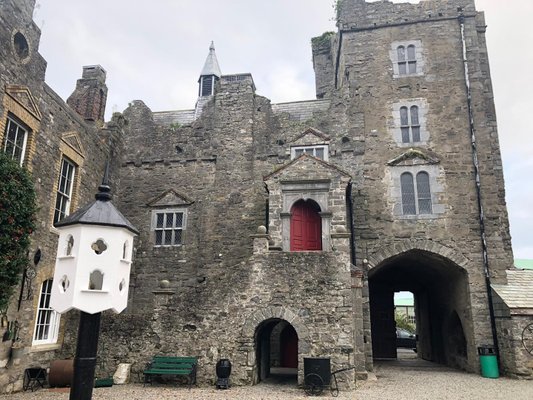
"Drimnagh Castle is one of the few medieval castles that is still standing in Dublin. The structure dates back to the 12th century and was originally built by the Barnewell family, who arrived in Ireland with Strongbow. The Norman castle can be found in the suburb of Drimnagh, and it is worth the trip to the south side to see the pretty stone castle—which happens to be the only castle in Ireland with a moat."
"Drimnagh Castle is the only moated castle in Ireland and boasts over 700 years of history. It fell into disuse and disrepair in the 1960s only to be rediscovered thirty years later, and from then on the restoration of this hidden gem began. The castle has been open to the public since 1996 and has been offering guided tours since."
"Just 10 km outside the city center, Drimnagh Castle is unique because it’s the last castle in Dublin that is surrounded by a flooded moat. Tours are available for a small fee. Courses on the craft of dry-stone walling (stone walls without mortar) are also taught here."


"The General Post Office located in the center of O’Connell St., Dublin’s main street, is one of Ireland’s most famous of buildings. It currently is a working post office but is more recognized as the main stronghold of the rebels of the 1916 Irish “Rising,” on the country’s quest for independence, and also for its beautiful architecture. There is also an option of a paid admission attraction highlighting and explaining in great detail the 1916 Rising. I was unable to see this exhibition about the uprising, but I will make it a point to check it out the next time I’m in Dublin."
"The General Post Office (GPO) on O’Connell Street is among the most fascinating and evocative of Dublin’s historic sites. Designed in the Greek Revival style and still a working post office to this very day, the GPO is not just an architectural goldmine. As the main stronghold of the Irish volunteers in the Easter Rising of 1916, it’s also closely tied to Ireland’s struggle for independence in the earlier part of the 20th century."
"Highlights on and around O'Connell Street include: The historic General Post Office where the 1916 rebellion started, the Hugh Lane Art Gallery, the popular shopping area Henry street and the vibrant market stretch Moore Street, with colourful street traders and ethnic shops. The main drag is very busy, but the best parts are on the side streets surrounding it!"




"Supermac's are like the Irish McDonald's but ten times better. They take time and care and have loads of restaurants all over Ireland."

"Why: You have to be careful when wandering the streets of Temple Bar because otherwise you can end up paying a lot of money for some bang average food. However, there are plenty of hidden gems to be found if you know where to look and Al Vesuvio is one of them. Located in Meeting House Square, its vast menu covers everything from fresh pasta and pizzas, to more hearty classic main courses such as veal Milanese."
"Right on Meeting House Square in Temple Bar, this place makes a great starting point for a night out. Al Vesuvio is a cosy spot serving top-notch Italian food seven days a week. We especially love the huge selection of pizzas with (rosse) and without (bianche) cheese."

"Really friendly tolerant staff, well used to kids wandering around. They have a great atmosphere, and plenty of choice for everybody with a massive menu – better again, with outlets in Dun Laoghaire, Tallaght, Dundrum and Blanchardstown and a few dotted around the city centre, they're a solid option wherever you happen to be."







